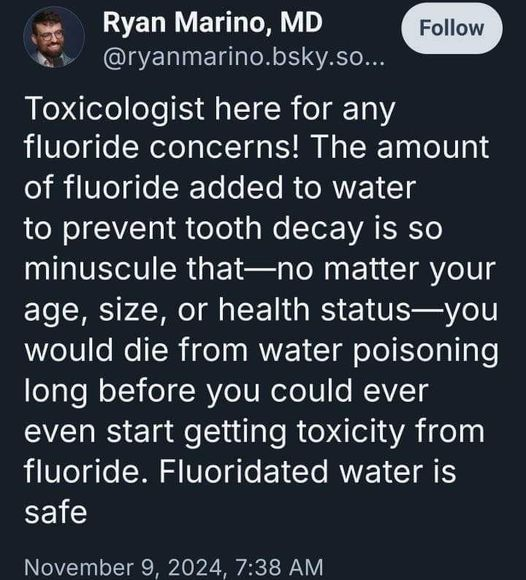Toxicologist here. I think that take is dishonest or dumb.
Taking a lethal dose is almost never the concern with any substance in our drinking water.
Hormones, heavy metals, persistent organic chemicals, ammonia are all in our drinking water. But for all of them we can't drink enough water to die from a high dose.
Some of them still have a large effect on our bodies.
It's about the longterm effects. Which we need longterm studies to learn about. That makes them harder to study.
Still doesn't mean flouride does anything bad longerm. But the argument is bad.

